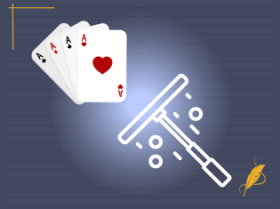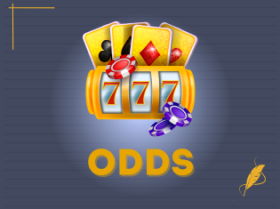Poker is a game that has several different terms and strategies to remember. However, one of the most common ones you will encounter is the poker rake, which, in a nutshell, refers to the commission or fees that the poker provider levies on each individual game or tournament. There are multiple types of rake in poker, and platforms leverage it differently depending on the size of the game and prize pool. Let’s take a look and see how it works.
Crunching the Stats
Broadly speaking, there are three prominent types of rake systems that poker platforms will use to generate income or fees. In high-stakes games, for instance, you’re more likely to encounter a time rake, which is a rolling amount that is taken from each player’s pot at intervals. Usually, this occurs every half hour, but I’ve played in games where the rake fluctuates between smaller amounts every 15 minutes or amounts taken every hour on the dot. It depends on the provider you use.
A dead drop is the easiest one to remember, which is a fixed fee on the dealer button at the end of each round. In live games, the pot rake is the most common.
Below, you can see a more detailed breakdown including different rake types.
| Rake type | Initial cost/General description | Type of game | General percentage of rake |
|---|---|---|---|
| Pot Rake | % taken from each pot (with a cap) | Cash games | Anywhere between 1% and 15% |
| Time Rake | Fixed fee per time interval (e.g. $5/hr) | High-stakes cash games | Usually maxed out at around 3% – but watch out for games that take time rake more than once per hour |
| Tournament Fee | Flat fee added to buy-in (e.g. $50+$20) | Tournaments | Usually incurred as part of the buy-in or entry fee |
| No Flop, No Drop | No rake if the flop isn’t seen | Cash games | N/A |
| Progressive Rake | Rake increases with pot/blind size | Some cash games | Gets higher as the pot increases |
| Cap Rake | Maximum rake per hand | All cash games | Limited to a specific amount or a percentage, such as 20% of the total pot |
A standard pot rake may be capped at 5% or $3 per hand in most mid-stakes games.
The goal is for casinos to generate income, take their cut for hosting the game, and provide an enticing enough prize pool so that as many players as possible will join that particular game or tournament.
Be careful:The rake in poker has the biggest impact on low-stakes players.
How Do Casinos Set the Rake Fee?
The higher the rake, the greater the yield for the casino, and it’s important to know the maths so you do not encounter a rake trap.
In my experience, rake percentages typically range from 1% to 12%. Not all the platforms take it, by the way. However, each casino decides for itself and uses special formulas to calculate it.
Tip:Be careful of platforms that set a high rake percentage, and always check out what people have had to say about a brand or a casino via reviews or social media before you sign up for their promotion or their tournament.
Rake Example
This is a hypothetical example for a poker rake.
- Game type: $10/$20 No Limit Texas Hold’em – Cash Game (no flop, no drop rule applied).
- Rake: 10% capped at $100.
- Pot size: Between $200 and $500.
- Players: 10 players pay $25 into the pot.
- Flop: Brings the pot to $500
- Rake applied: 10% of $500 = $50.
So, $50 is taken as rake, leaving a total of $450 in the pot. If a rake continually takes this fee every hour as part of a progressive rake, you can see how these costs begin to stack, and quickly.
How to Leverage the Mechanics of Poker Rake
Honestly, as is the case with playing poker, it’s not something you’re going to get a good eye for unless you have spent considerable time exploring tables, checking out different rake structures, and understanding how they shape a game in real-time. That’s not to say you are hopeless in this situation, though, far from it.
- Enter fewer hands and raise higher amounts in high-rake games.
- Decide on what you think is too high a rake. Some people put this as high as 10%, but anything over 8% is usually a no-go for me.
- Identify weaker players at the table and leverage big pots – this will help to dilute the rake.
- Shop around and try to avoid small pots, especially those with a time rake.
Important:For instance, a $1 rake per $20 = 5%. Anything over 10% should be something to avoid. If it’s a progressive rake of 10% per hour or higher, it’s best to shop around, as this will bleed your bankroll.
Can You Beat the Poker Rake?
In regulated poker games, it’s possible to overcome it. While you can’t avoid it entirely, there are ways to manage it:
- Play bigger pots: Once the rake surpasses a certain amount, its percentage decreases. For example, in a game with a 10% rake and a $6 cap, pots over $60 will be raked at a lower percentage, reducing the overall impact on your winnings.
- Avoid short-stacked games: Small pots are harder to beat due to the rake taking a significant chunk. If you’re playing against short stacks, the rake often nullifies any potential gains.
- Steal the blinds: Many poker rooms don’t rake pots unless there’s a flop, so stealing the blinds can be a profitable strategy. In these hands, the pots remain unraked, allowing you to keep all your winnings.
Final Thoughts
In summary, here are the key things to watch out for:
- Max rake percentages.
- How much rakeback is being taken from the pot, and how does it measure against your bankroll?
- Type of rake: time vs. pot rake.
- What the rake is capped at.
Understand how to manage your bankroll, how rake works, and the sorts of poker sites to avoid. Once you have acquired this knowledge, you will be able to participate in tournaments and games with providers who offer a fair, competitive rake and prioritise their customers’ interests over their bottom line.







